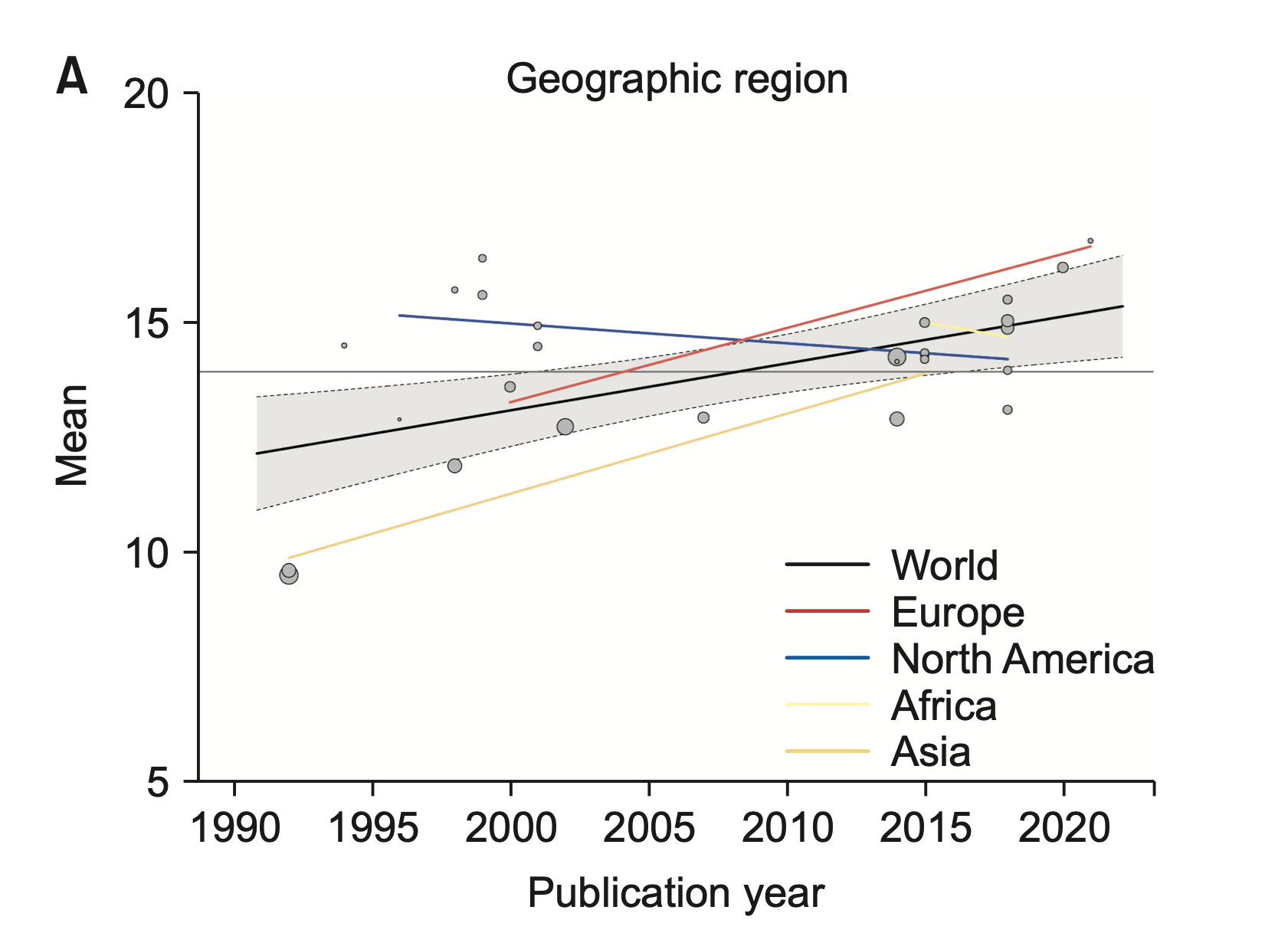Stanford study concludes that average penis size has increased 24% in 30 years

- According to a new analysis, the average length of the erect male penis has risen by 24% between 1992 and 2021, from 12.27 cm (4.8 in) to 15.23 cm (6 in).
- The genital gains were not shared equally across the world, however. Asian and European men experienced the greatest increase in penis size, while North American males’ phalluses deflated slightly.
- Researchers have offered a wide variety of explanations for lengthening penises, from earlier onset of puberty to the prevalence of porn.
Over the past few years, men have had to contend with emasculating headlines declaring that their testosterone levels are falling, their sperm counts are decreasing (maybe), and even their signature Y chromosome is disappearing. So a new finding might bring some measure of relief to their fractured egos: The average length of the erect male penis has risen by 24% between 1992 and 2021.
Onward and upward
That invigorating statistic comes courtesy of an international team of researchers led by urologists at Stanford University. In their analysis, published in the World Journal of Men’s Health, they reviewed, tallied, and aggregated the results of 75 studies conducted across the world over the preceding decades that measured men’s erect penis size in laboratory settings. Data from 55,761 men were included. After adjusting for geographic region, subject age, and subject population, the authors found that the average adult erect penis increased in length from 12.27 cm (4.8 in) in 1992 to 15.23 cm (6 in) in 2021.
The genital gains were not shared equally across the world, however. Asian and European men experienced the greatest increase in penis size, while North American males’ phalluses deflated slightly.

The study’s senior author, Dr. Michael Eisenberg, a professor of urology at Stanford, expressed alarm at the global trend in an interview with Stanford’s Scope Magazine.
Pesticides, puberty, peaches, or porn?
“Any overall change in development is concerning, because our reproductive system is one of the most important pieces of human biology. If we’re seeing this fast of a change, it means that something powerful is happening to our bodies.” He added, “There could be a number of factors at play, such as chemical exposure, like pesticides or hygiene products, interacting with our hormonal systems.”
As they wrote in the paper, Eisenberg and his co-authors also speculated that a trend toward an earlier onset of puberty for boys may also be playing a role in lengthening penises.
Another, simpler and more benign explanation exists: Nutrition has improved across much of Europe and Asia over the past few decades, allowing those who live there to grow taller and bigger. Thus, men’s penises may have engorged in sync with their body size. Men in North America, on the other hand, have “suffered” from too much nutrition. Over the past few decades, they’ve grown increasingly obese and sedentary, which can reduce the firmness of an erection and thus trim penis size.
Dr. Larry Lipshultz, chief of the Scott Department of Urology’s Division of Male Reproductive Medicine and Surgery at Baylor College of Medicine, who wasn’t part of the study, expressed surprise at the results in an interview with Everyday Health, and also offered an unconventional explanation for the increase in penis length.
“You might possibly blame online porn, but that’s just a theory,” he said. “The more someone has erections, there might be greater potential for better erections. The tissue would stretch more, hence would get longer.”





